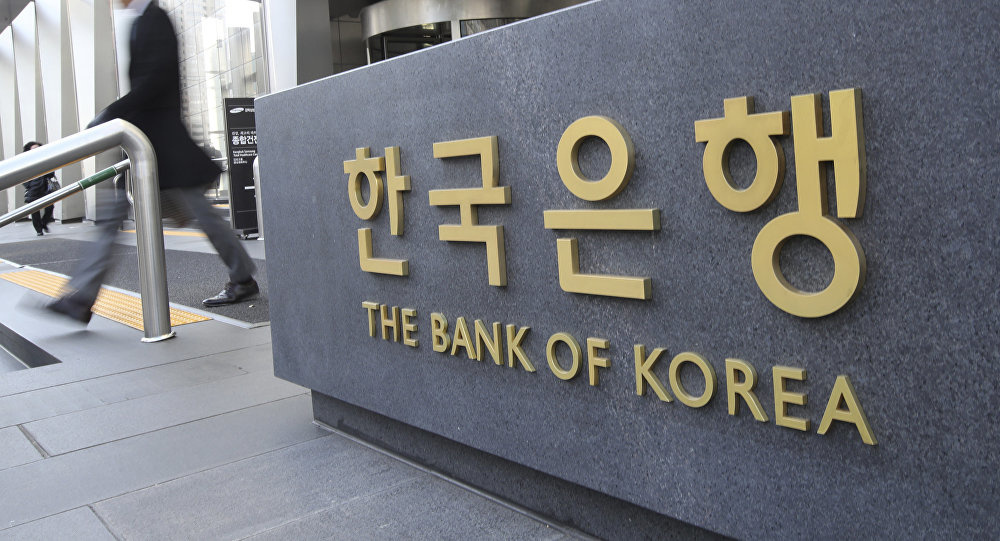South Korea to
rectify ties with Japan
South Korean President Moon Jae-in is keen on improving
relations with Japanese Prime Minister Shinzo Abe, a year after South
Korea Supreme Court's judgment upholding the compensation for wartime
laborers from Nippon Steel.
The
presidential Blue House said it is trying to set up meetings with foreign
leaders along the lines of the nearing ASEAN Summit in Bangkok and
the APEC Summit in Santiago, Chile, from Nov 11 to 17. Moon and Abe will participate
in the two summits.
The
statement comes a year after South Korea's top court supported a lower-court order
to Nippon Steel to pay 100 million won ($85,600) as recompense to each of
the four petitioners. Japan saw demonstrations against this decision that held
that the issue was resolved according to the 1965 treaty between the two nations.
According
to the Japanese media, the country does not intend to arrange a summit till Seoul
takes deals with the matter.
The
1965 treaty stabilized diplomatic ties between the two nations, with Japan
paying $300 million to compensate and an additional $200 million in installments
for its 35 years of colonization of the Korean Peninsula from 1910 to 1945.
Since
the court decision, Japan clamped on exports to South Korea, upsetting export fireballs
like Samsung Electronics and SK Hynix.
In
response, Seoul refused renewal of a military intelligence-sharing pact with
Japan, an agreement that helps protect both countries from North
Korean military threats.
According
to Lee Won-deog, a professor of Japanese studies in Kookmin University in
Seoul, the best solution to this would be that South Korea abandons the demand for
reimbursement and in return, Japan tenders an apology for illegal occupation
of the Korean Peninsula.
Lee
also suggested bringing the victims' groups and opposition parties to the
consultation table.
Bank of Korea’s Second
Release of Forex Intervention Data

On Monday, the Bank of Korea released its
foreign exchange intervention across the first half of 2019, the second such
report released to increase openness.
Braving adverse factors both, back home and
overseas, BOK sold $3.8 billion, after deductions, through the end of June
in favor of the South Korean won; the lowest-scoring Asian currency of
the same duration.
This is a sharp rise from the $187 million that
the bank sold in the latter half of 2018, though this is not phenomenal as
compared to its other sources. However, the BOK has opened to the public, only
the amount of its interventions since the last two half-yearly periods.
The liquidation of $3.8 billion exceeded the
net sales of $2.9 billion in 2018, though lower than the $6.6 billion
in 2016 (2017’s net purchases were $9 billion.)
Despite being far from picturesque, the BOK
is powered to continue to defend the South Korean economy. With $400 billion-plus,
making approximately 25% of the GDP, the BOK’s worldwide reserves offers plenty
of room to uphold the won.
Also, the central bank’s plan towards
better openness of its foreign exchange intervention by sharing data on a once
a quarter later this year would further discourage doubts against the won. The
BOK can reduce its key interest rate towards the close of the year as a
thrust to the economy.
Likewise, the South Korean economy would
benefit most by raising state expenditure to enhance the economy.
South Korea for improved inter-Korean liaisons,
DPRK-U.S. Denuclearization Dialog
South Korea pushes for
improved inter-Korean relations for better denuclearization negotiations
between the Democratic People's Republic of Korea (DPRK) and the United States,
as stated by a unification ministry official of South Korea on Wednesday.
Under the condition of
anonymity, the senior official said that the government endeavors toward the
virtuous cycle, promoted by the South Korean President, Moon Jae-in for
improved inter-Korean ties to positively impact the DPRK-U.S. denuclearization
talks.
The official said that Seoul
offered to organize operational-level talks with Pyongyang about problems that
led to the suspension of the Mount Kumgang tour project. The following day, the
DPRK expressed a preference for exchange of letters and not one-on-one talks.
As per DPRK's official
newspaper, Rodong Sinmun, Kim Jong Un welcomed the South Korean countrymen whenever
they want to come to Mount Kumgang.
Kim ordered for the elimination
of South Korea-constructed cheap buildings in Mount Kumgang in accord with the concerned
unit of South Korea.
South Koreans do not
travel to Mount Kumgang since a South Korean female tourist was shot dead in 2008
by a DPRK soldier after supposedly entering the no-go zone.
Seoul's unification
ministry is looking for innovative resolutions to the Mount Kumgang issues in
the backdrop of the global situation, inter-Korean liaisons and public opinion.
In the third summit in
Pyongyang last September, the leaders of the two Koreas agreed to resume the
Mount Kumgang tour program once conditions were fulfilled.

